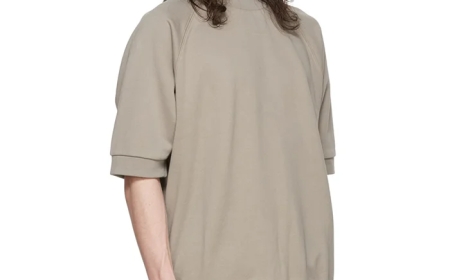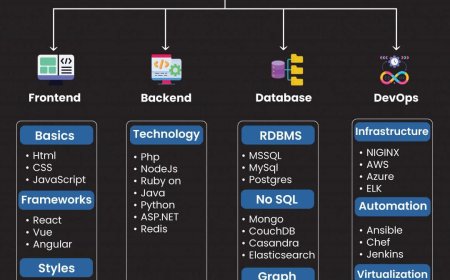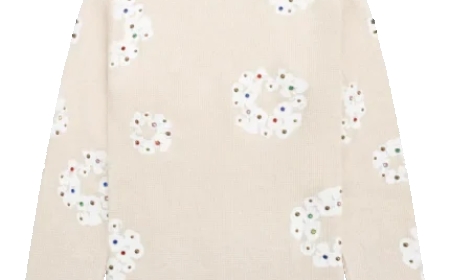How to find the best coffee shops in Omaha
How to Find the Best Coffee Shops in Omaha Omaha, Nebraska, may not be the first city that comes to mind when you think of specialty coffee, but beneath its Midwestern charm lies a thriving, quietly innovative coffee culture. From neighborhood roasteries tucked into historic brick buildings to modern third-wave cafés with artisanal pour-overs and single-origin beans, Omaha’s coffee scene has evolv
How to Find the Best Coffee Shops in Omaha
Omaha, Nebraska, may not be the first city that comes to mind when you think of specialty coffee, but beneath its Midwestern charm lies a thriving, quietly innovative coffee culture. From neighborhood roasteries tucked into historic brick buildings to modern third-wave cafés with artisanal pour-overs and single-origin beans, Omaha’s coffee scene has evolved dramatically over the past decade. Whether you’re a local looking to discover your new favorite spot, a visitor exploring the city, or a coffee enthusiast seeking authentic, high-quality experiences, knowing how to find the best coffee shops in Omaha can transform your daily ritual into a meaningful exploration of flavor, community, and craftsmanship.
Unlike larger metropolitan areas where coffee chains dominate, Omaha’s coffee landscape is defined by independent operators who prioritize quality, sustainability, and local connection. This makes finding the best spots more rewarding—but also more challenging. Without a clear strategy, you might end up at a generic café with mediocre beans or miss hidden gems that locals swear by. This guide provides a comprehensive, step-by-step approach to uncovering Omaha’s top coffee destinations, backed by practical tools, real-world examples, and expert best practices. By the end, you’ll know exactly how to identify, evaluate, and visit the coffee shops that deliver exceptional taste, atmosphere, and service.
Step-by-Step Guide
Step 1: Define What “Best” Means to You
Before you start searching, clarify your personal criteria for what makes a coffee shop “the best.” This step is critical because “best” is subjective. For some, it’s about the quality of the espresso. For others, it’s the ambiance, Wi-Fi reliability, seating comfort, or availability of plant-based milk options. Ask yourself:
- Do you prioritize single-origin pour-overs or rich, balanced espressos?
- Is a quiet space for reading or working more important than a lively social environment?
- Do you value locally roasted beans, or are you open to internationally sourced beans from reputable roasters?
- Is sustainability—such as compostable packaging or direct trade relationships—a dealbreaker?
- Do you need outlets, large tables, or a restroom that’s clean and accessible?
Answering these questions helps you filter results later. For example, if you’re a digital nomad, you’ll prioritize shops with strong Wi-Fi and ample seating. If you’re a coffee connoisseur, you’ll seek out places that roast their own beans or offer tasting flights. Defining your priorities upfront saves time and ensures your final choices align with your needs.
Step 2: Use Online Maps and Review Platforms Strategically
Start your search on digital maps like Google Maps and Apple Maps. These platforms offer visual overviews of coffee shop density across Omaha neighborhoods, including North Omaha, Old Market, Dundee, and Benson. Search “coffee shops near me” or “best coffee Omaha” and examine the results.
But don’t rely solely on star ratings. A 4.8-star rating with 200 reviews is more trustworthy than a 5.0-star rating with only five reviews. Look for patterns in the reviews:
- Are multiple reviewers mentioning “fresh beans” or “knowledgeable baristas”?
- Do people complain about long wait times, cold drinks, or inconsistent quality?
- Are there photos of the interior, drinks, or bean bags? Visuals often reveal more than text.
Also check specialized platforms like Yelp and TripAdvisor. On Yelp, filter results by “Highest Rated” and read the “Most Recent” reviews to catch changes in quality or management. On TripAdvisor, look for reviews from out-of-town visitors—they often highlight standout experiences that locals take for granted.
Step 3: Explore Local Coffee Blogs and Podcasts
Omaha has a growing community of food and beverage bloggers who document the city’s coffee scene with depth and passion. Search for blogs like “Omaha Coffee Guide,” “Nebraska Sips,” or “The Coffee Crave” using Google. These sites often feature curated lists, interviews with roasters, and seasonal recommendations you won’t find on review platforms.
Podcasts are another underutilized resource. Look for local podcasts such as “The Omaha Foodie” or “Midwest Mornings” that occasionally feature coffee shop owners. These interviews provide insight into sourcing practices, roasting philosophies, and the story behind the shop—information that helps you assess authenticity and quality.
When reading blogs or listening to podcasts, pay attention to whether the author has visited multiple locations and compares them objectively. Avoid sites that only feature sponsored content or overly glowing reviews without critique.
Step 4: Check Social Media for Real-Time Insights
Instagram and TikTok are goldmines for discovering trending coffee spots in Omaha. Search hashtags like
OmahaCoffee, #CoffeeInOmaha, #OmahaCoffeeScene, or #NebraskaCoffee. Look for posts from local influencers, baristas, or customers who tag the shop’s location.
Pay attention to:
- Photos of latte art—consistent, detailed art often signals skilled baristas and quality espresso.
- Behind-the-scenes videos of roasting or brewing—these indicate transparency and craftsmanship.
- Stories or reels showing crowd levels during peak hours—this helps you avoid busy times if you need quiet.
Follow local coffee shops directly. Many post daily specials, new bean arrivals, or weekend events. A shop that actively engages with followers and shares educational content (e.g., “How We Roast Our Ethiopian Yirgacheffe”) is often more invested in quality than one that only posts promotional images.
Step 5: Visit Farmers Markets and Local Events
One of the most reliable ways to find exceptional coffee in Omaha is to attend local food and craft events. The Omaha Farmers Market (held weekly at the Old Market) often features pop-up coffee roasters from across Nebraska and Iowa. These vendors typically offer free samples, letting you taste before you commit.
Other events to watch for include:
- Omaha Coffee Festival (annual event featuring local and regional roasters)
- Nebraska Coffee Roaster Showcase
- Pop-up shops at art galleries, bookstores, or co-working spaces
At these events, you can talk directly to owners and baristas, ask about their sourcing, and get recommendations for their flagship locations. Many pop-up vendors operate permanent shops elsewhere in the city—this is your chance to get insider tips.
Step 6: Ask Locals for Recommendations
No digital tool replaces the wisdom of someone who lives in Omaha. Ask baristas at your current favorite café, coworkers, neighbors, or even librarians where they go for coffee. Locals often know about hidden spots that aren’t listed online—like a tiny roastery in a converted garage or a family-run café with a 20-year legacy.
When asking, be specific: “Where do you go when you want the best espresso in the city?” or “Which shop uses beans you can’t find anywhere else?” Avoid vague questions like “Where’s good coffee?”—they yield generic answers.
Also, join local Facebook groups such as “Omaha Foodies” or “Nebraska Coffee Lovers.” These communities are active, supportive, and full of detailed recommendations. Search past threads before posting to avoid duplicates.
Step 7: Evaluate the Coffee Itself
Once you’ve narrowed your list to five or six candidates, visit them. But don’t just order a latte—order a black pour-over or espresso. This is the only way to truly judge quality.
Here’s what to assess:
- Aroma: Does the coffee smell vibrant, fruity, or chocolatey—or flat and stale?
- Flavor: Is it balanced? Do you taste distinct notes like citrus, caramel, or berry? Or is it bitter, burnt, or one-dimensional?
- Body: Does it feel light and tea-like, or rich and syrupy? High-quality coffee has a satisfying mouthfeel.
- Aftertaste: Does the flavor linger pleasantly, or vanish quickly with a sour or metallic aftertaste?
Also observe the shop’s practices:
- Are beans displayed in clear, labeled bags with roast dates?
- Do baristas grind beans fresh for each order?
- Is the espresso machine clean and well-maintained?
- Are water filters visible or mentioned? (Clean water is essential for good coffee.)
A shop that takes pride in its coffee will be happy to explain its process. If staff seem indifferent or can’t answer basic questions, it’s a red flag.
Step 8: Track Your Experiences
Keep a simple log of each coffee shop you visit. Note:
- Shop name and location
- Date and time visited
- What you ordered
- Flavor notes and overall impression
- Atmosphere and service
- Price per cup
- Would you return?
Use a notebook, Google Sheets, or even a notes app. Over time, patterns emerge. You might discover that you consistently prefer shops that roast within 14 days of your visit, or that you enjoy quieter locations in the morning. This personal database becomes your go-to reference for future visits and makes your coffee journey intentional rather than random.
Best Practices
1. Prioritize Roast Dates Over “Fresh” Labels
Many shops label their beans “fresh,” but that term is meaningless without context. The best coffee is roasted within 7–21 days of purchase. Look for bags with explicit roast dates—not “best by” dates. If a shop doesn’t display roast dates, ask. If they don’t know or can’t provide the information, move on.
2. Visit During Off-Peak Hours
Go early on weekdays or late in the afternoon. This lets you observe the shop’s operation without the pressure of crowds. You’ll notice how baristas handle equipment, whether they clean between drinks, and how attentive they are to detail. A shop that shines during slow hours is likely to maintain quality during rush times.
3. Support Roasteries That Own Their Process
Some Omaha coffee shops roast their own beans in-house. Others source from reputable regional roasters like Omaha Coffee Roasting Co., Red Brick Roasters, or Kettle Coffee. Both models can produce excellent coffee—but shops that roast their own often have tighter control over quality and freshness. Look for shops that list their roaster on the menu or have a visible roasting area.
4. Avoid Chains and “Coffee-Adjacent” Businesses
While Starbucks and Dunkin’ are convenient, they rarely offer the quality or experience sought by true coffee enthusiasts. Similarly, avoid places where coffee is an afterthought—like gas stations, bookstores without dedicated baristas, or restaurants that serve coffee from a bulk urn. Focus on establishments where coffee is the primary product.
5. Learn Basic Coffee Terminology
Understanding terms like “single-origin,” “light roast,” “washed process,” or “crema” helps you communicate better with baristas and evaluate menus. You don’t need to be an expert, but knowing that a “light roast” preserves floral notes while a “dark roast” emphasizes chocolate and smoke helps you choose based on your taste preferences.
6. Be Open to Experimentation
Don’t limit yourself to espresso and drip coffee. Try cold brew, AeroPress, French press, or siphon brewing if offered. These methods highlight different flavor profiles and can surprise you. Many Omaha shops experiment with seasonal brews—like hibiscus cold brew or maple-processed beans—that reflect local creativity.
7. Respect the Culture
Coffee shops in Omaha are often small businesses run by passionate individuals. Be patient, tip appropriately, and avoid rushing baristas. Ask questions politely. If you’re working remotely, buy something every few hours. Supporting these businesses ensures they stay open and continue elevating the city’s coffee scene.
Tools and Resources
Google Maps
Essential for visualizing locations, checking hours, reading reviews, and viewing photos. Use filters for “Open Now,” “Highly Rated,” and “Coffee” to narrow results. Save favorite spots to a custom list titled “Omaha Coffee Favorites.”
Yelp
Excellent for filtering by “Top Reviewed” and reading detailed feedback. Use the “Photo” tab to see drink quality and interior cleanliness. Check for “Recommended by 100+ people” badges.
Search hashtags and follow local accounts like @omahacoffeeroasters, @redbrickroasters, @thebeanandbrew, and @nebraskacoffee. Reels and stories often show real-time activity.
Specialty Coffee Association (SCA) Coffee Shops Directory
While not Omaha-specific, the SCA’s directory lists certified shops that meet global quality standards. Some Omaha locations appear here, signaling professional commitment.
BeanBox or Atlas Coffee Club
These subscription services feature rotating beans from top roasters. If you receive a bag from an Omaha roaster, you’ll know it’s been vetted by experts and is likely high quality.
Local Coffee Festivals
Attend the annual Omaha Coffee Festival (usually held in April). It’s the largest gathering of local roasters, brewers, and enthusiasts in the region. You’ll taste dozens of coffees in one day and meet the people behind them.
Omaha Public Library Coffee Resources
Librarians often curate lists of local businesses and can point you to niche publications or archives about Omaha’s food culture. Ask for “local business directories” or “Nebraska food history.”
Reddit: r/Omaha
Search “coffee” in the Omaha subreddit. Threads like “Best coffee shop in Omaha?” are frequently updated with passionate, detailed responses from residents.
Real Examples
1. Red Brick Roasters – North Omaha
Founded in 2017, Red Brick Roasters is one of Omaha’s few fully independent roasteries with a dedicated tasting room. They source beans directly from farms in Colombia and Ethiopia and roast in small batches every Tuesday and Friday. Their pour-over menu changes weekly, and they offer a “Bean of the Month” subscription.
Why it stands out: Every bag has a roast date, batch number, and tasting notes. Baristas are trained in SCA brewing methods. The shop hosts monthly cuppings (tasting sessions) open to the public.
2. The Bean & Brew – Dundee
A cozy, plant-filled café with a focus on community. The Bean & Brew partners with local artists for monthly exhibitions and offers free Wi-Fi, outlets, and quiet zones. Their house blend is roasted by Kettle Coffee, and they use filtered water systems certified by the Water Quality Association.
Why it stands out: Consistently high ratings on Google (4.9/5) for reliability, cleanliness, and service. Regulars say the baristas remember names and preferences. Their oat milk latte is considered the best in the city by multiple food bloggers.
3. Kettle Coffee – Benson
Known for its minimalist aesthetic and intense focus on technique. Kettle Coffee uses a La Marzocco Linea PB espresso machine and grinds beans with a Mahlkönig E65S. They offer a “Flight of Origins” tasting: three single-origin coffees brewed with different methods (pour-over, Chemex, French press).
Why it stands out: Transparent sourcing. Their website lists each farm, elevation, and processing method. They’ve won multiple awards at the Nebraska Coffee Championship. The owner, a former barista from Portland, moved to Omaha to build a “coffee sanctuary.”
4. Dandelion Coffee Co. – Old Market
Located in a restored 1920s building, Dandelion combines European café culture with Omaha’s Midwestern warmth. They roast their own beans using a Probat P12 roaster and offer a “Coffee & Book” pairing—select a novel and a complementary brew.
Why it stands out: Their cold brew is steeped for 20 hours and served over hand-carved ice. They use only compostable packaging and donate 5% of profits to local youth coffee education programs.
5. Grind & Go – West Omaha
A hidden gem in a strip mall, Grind & Go is beloved by locals for its no-frills, high-quality approach. No Wi-Fi, no seating beyond two stools—but the espresso is consistently perfect. They roast their own beans on-site every morning.
Why it stands out: The owner, a retired engineer, developed his own roast profile after years of testing. His “Midnight Blend” has been featured in Midwest Coffee Magazine. You’ll often find him chatting with customers about water hardness and extraction times.
FAQs
What is the best time to visit coffee shops in Omaha for the best experience?
Weekday mornings between 8:00 AM and 10:00 AM are ideal. The shop is open, the coffee is fresh, the baristas are rested, and crowds are minimal. Avoid weekends after 11:00 AM unless you enjoy lively atmospheres.
Do Omaha coffee shops serve food?
Many do, but quality varies. Look for shops that offer pastries baked in-house or locally sourced baked goods. Avoid places that serve pre-packaged snacks. Some top shops, like The Bean & Brew, partner with local bakeries for daily rotating treats.
Are there vegan-friendly coffee shops in Omaha?
Yes. Nearly all independent coffee shops in Omaha offer oat, almond, soy, or coconut milk. Some, like Dandelion Coffee Co., even offer house-made cashew cream. Always ask if they have dairy-free pastries—many do.
How much should I expect to pay for a good cup of coffee in Omaha?
Espresso-based drinks typically range from $4.00 to $5.50. Pour-overs and specialty brews cost $5.00 to $7.00. While this is higher than chain prices, it reflects the cost of high-quality beans, skilled labor, and sustainable practices.
Can I buy coffee beans to take home from these shops?
Almost all of them do. Look for bags labeled with roast dates, origin, and tasting notes. Many offer online ordering and shipping. Some even sell pre-ground options for drip machines.
Is there a coffee subscription service in Omaha?
Yes. Red Brick Roasters and Kettle Coffee both offer monthly subscriptions with rotating single-origin beans. Some shops allow you to customize roast level and grind size.
How can I tell if a coffee shop is ethical and sustainable?
Look for: direct trade certifications, compostable packaging, reusable cup discounts, water filtration systems, and partnerships with local farms. Ask about their sourcing—shops that can name their farmers are more likely to be ethical.
Are coffee shops in Omaha open on holidays?
Most independent shops close on major holidays like Thanksgiving and Christmas Day. Some reduce hours on weekends or holidays. Always check their Instagram or website before visiting.
Conclusion
Finding the best coffee shops in Omaha isn’t about checking off a list—it’s about cultivating a deeper relationship with the craft, the community, and the culture behind every cup. It requires curiosity, patience, and a willingness to go beyond surface-level reviews. By following the steps outlined in this guide—defining your preferences, using digital tools wisely, engaging with local voices, and tasting critically—you’ll move from being a casual coffee drinker to a discerning coffee explorer.
Omaha’s coffee scene is still growing, and its best spots are often the ones that fly under the radar. The shop with the handwritten sign on the door, the barista who remembers your name, the bag of beans with a roast date from last Tuesday—these are the treasures waiting to be discovered. Don’t just search for coffee. Seek out the stories behind it.
Start today. Pick one shop from this guide, visit during off-hours, order a black pour-over, and pay attention. Taste the difference. Ask the questions. Let your next cup be more than a caffeine fix—it can be a connection to a place, a person, and a passion that makes Omaha uniquely rich.





















